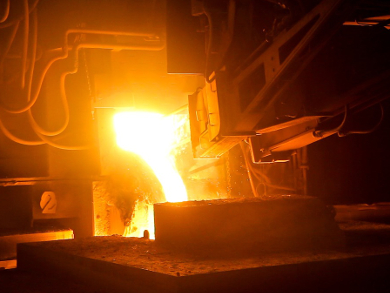Energy storage devices must be designed with the end use in mind: power-dense sources provide a large surge of energy very quickly (e.g., camera flash units), while energy-dense sources provide a steady supply of energy over a longer period of time (e.g., laptop batteries). Transition-metal oxide capacitors store and quickly release electrical charge through fast, reversible redox reactions at their surfaces.
Chaopeng Fu and Patrick Grant, University of Oxford, UK, showed how mill scale, a mixed iron oxide waste product that steel mills generate in tonne quantities, could be upcycled to form inexpensive pseudocapacitors. They sprayed powdered mill scale suspensions onto stainless steel sheets and aluminum foils to form electrodes. The electrodes where used in electrochemical cells with platinum counter-electrodes and aqueous sodium sulfite as the electrolyte.
This arrangement yielded 25 F/g capacitance at 0.25 A/g current, and the cells retained 83 % of their initial capacitance after 5000 cycles. Electrodes made from mill scale, an industrial waste product, can be made much more cheaply than similar electrodes made from commercial iron oxide nanoparticles or activated carbon.
- Toward Low-Cost Grid Scale Energy Storage: Supercapacitors Based on Up-Cycled Industrial Mill Scale Waste,
Chaopeng Fu, Patrick S. Grant,
ACS Sustainable Chem. Eng. 2015.
DOI: 10.1021/acssuschemeng.5b00757




